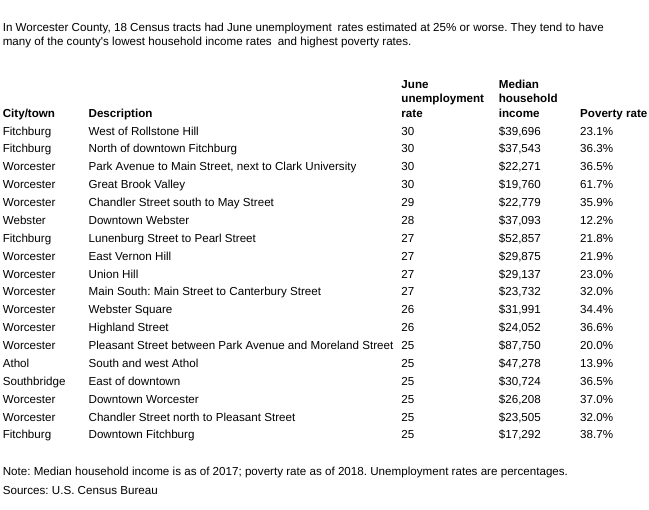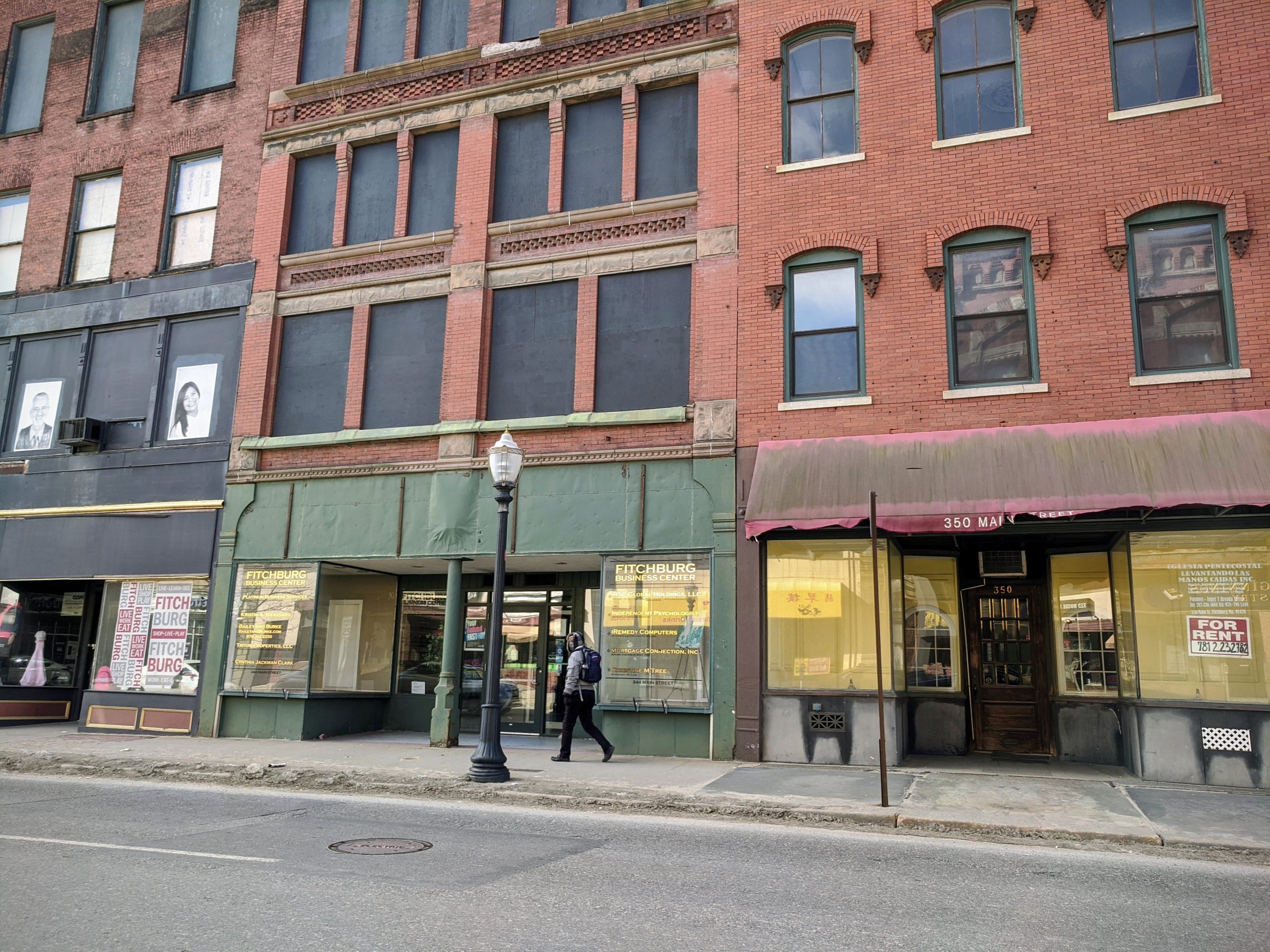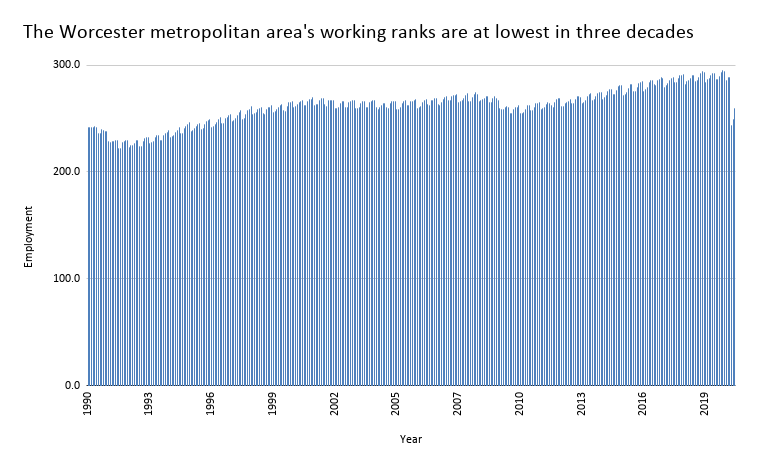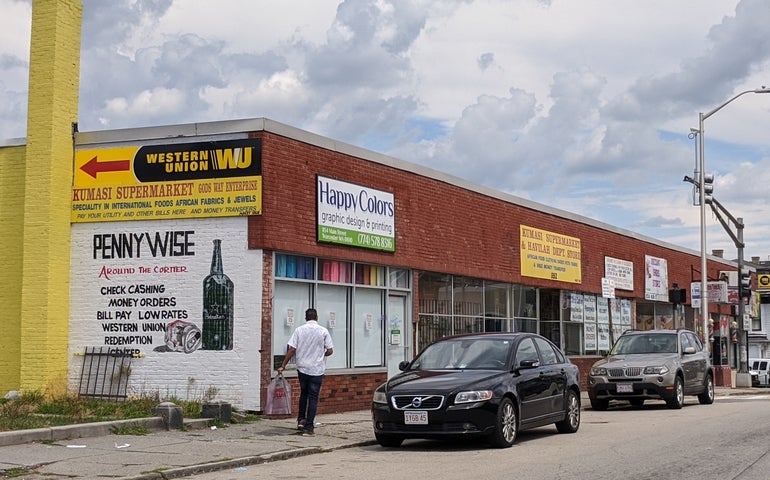Neighborhoods in Worcester and Fitchburg struggling with high poverty rates before the coronavirus pandemic hit now have unemployment rates estimated at 30% or higher.
Census tracts covering those neighborhoods — including Main South in Worcester and Downtown Fitchburg — were already among the poorest in Worcester County. Now those four U.S. Census tracts, with more than 18,000 residents among them, are faced with a daunting challenge of roughly a third or more of their adults in the workforce out of a job as of June.
Other relatively high-poverty areas of Central Massachusetts are also experiencing particularly high unemployment, including Downtown Webster (28%), Downtown Athol (25%) and an area just east of Downtown Southbridge (25%). More than 51,000 people, primarily in Worcester, live in areas with at least 25% unemployment, or more than 6% of Worcester County’s population.
“Neighborhoods will be hurt by large unemployment but richer neighborhoods have a stronger safety net via higher demand,” said Robert Baumann, an economics professor at College of the Holy Cross. in Worcester “During recoveries, areas with high demand typically recover faster, and that seems likely to happen again once we find our way out of this.”
Those poorer neighborhoods might be more likely to have residents working in lower-income jobs that have fared worst during the pandemic.

In the Worcester metro area, leisure and hospitality jobs — which average around $17 an hour nationally — have dropped by 40% this year. Finance jobs, whose pay averages more than $37 an hour, have declined locally by less than 3% during that time. Pay for higher-earning jobs has actually increased in the past few months, including finance and information jobs.
“Putting this fact together with rising unemployment,” Baumann said of some industries’ rising pay, “suggests that lower income people are losing their jobs at a much faster rate than the rest. In other words, the recession is disproportionately hitting lower-income citizens. I suppose that is always the case, but currently we have an odd combination of very high unemployment and a Dow at over 27,000.”
The Worcester Business Journal’s analysis of unemployment data, income and census tracts comes from data from the National Community Reinvestment Coalition, the U.S. Bureau of Labor Statistics, and the analysts Yair Ghitza and Mark Steitz, who compiled a working paper using Census data to show how high unemployment rates are affecting individual neighborhoods.
The sudden recession has erased roughly 24 years of job growth in the Worcester metropolitan area. The workforce in the area, which includes Worcester County and Connecticut’s Windham County, was brought in April to the lowest level since February 1996 — and a 17% drop from the region’s employment peak just five months prior.
The biggest job declines have taken place in the poorest pockets of Worcester County.

Great Brook Valley in Worcester, for example, a tract with nearly 3,900 residents, has a median household income of $19,760, the second poorest tract in Worcester County and a fraction of the state’s median of $77,378. Its unemployment rate is at least 30%, and its poverty rate in 2018 was 61.7%, a number likely skewed by the fact it’s made up almost entirely of the Worcester Housing Authority development Great Brook Valley Gardens. Downtown Fitchburg, which is the poorest neighborhood in the county with a household income of $17,292, now has an unemployment rate of 25%. Its poverty rate is 38.7%.
Lower-income urban neighborhoods across the state are faring worse than suburbs and smaller communities. Cities already struggling with lower household incomes in places like Springfield, Brockton and Lawrence are most likely to have unemployment rates of 25% or worse.
The Census tracts in Worcester County with unemployment rates of 25% or more also had poverty rates often far higher than broader averages. Those areas’ average poverty rate was 30.8% in 2018, according to Census data, while the state average was 10.8% and the national average was 14.1%.
John Brown, an economics professor at Clark University, said the worst of the impact to those neighborhoods may still yet to be experienced because supplemental pay for the unemployed was in place through the end of July. Businesses in neighborhoods like Main South in Worcester may be fairly less harmed, however, he said.
“It turns out that smaller strip malls and maybe commercial corridors such as Main South have been less affected by the drop-off in consumer spending at brick-and-mortar shops than shopping malls, which are the real casualties of the pandemic/recession,” Brown said. “I am guessing that residents of lower-income neighborhoods such as Main South would rely less on package delivery services than middle and higher income neighborhoods and may be more likely to shop locally.”
Wealthier neighborhoods haven’t been quite as affected, even if their unemployment rates are nearly universally in the teens. In tracts where median household income exceeds $100,000, the June unemployment rate was 14%.

The lowest rate, in Bolton, was 11%. The town’s median household income is $151,618. Tracts where the unemployment rate was 12% were predominantly very high-earning areas: Berlin, Grafton, Northborough, Shrewsbury, Southborough, Westborough and certain Worcester neighborhoods.
In all, 47 of 170 tracts in Worcester County — two are excluded because they consist of only college campuses — had June unemployment rates of 20% or more, while 10 were below 13%.
The Worcester metropolitan area had one of the nation’s highest unemployment rates in June at 15.8%, according to the U.S. Bureau of Labor Statistics. The metro area typically includes Worcester County and Windham County, but the Fitchburg, Leominster and Gardner area was broken out separately — and had an even worse rate, at 18.7%.
The Worcester area’s rate was 26th worst nationally of nearly 400 metro areas. The Fitchburg, Leominster and Gardner area was seventh worst nationally.

